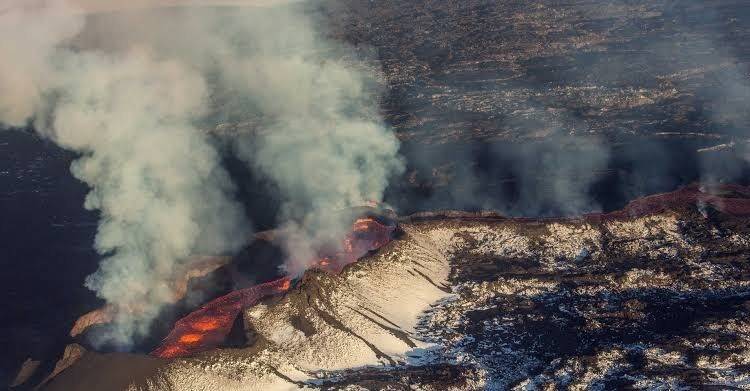Suspense in Iceland as dormant volcanic zone shows signs of life

Stay tuned with 24 News HD Android App

Unusual seismic activity in a volcanic zone near Iceland's capital Reykjavik that has been dormant for almost 800 years has left experts stumped and searching for clues as to whether an eruption is imminent.
The eerie cone of Mount Keilir rises up over the lunar-like landscape, just 25 kilometres (15 miles) from Reykjavik, looming over the area now being closely monitored by vulcanologists for the first signs of an eruption.
Iceland has been on high alert since last week after a series of small earthquakes and tremor pulses related to increased magma flow in the Krysuvik volcanic system, with the chances of an eruption seen as pretty likely last week.
But since then, with no eruption forthcoming, doubts have arisen about whether there will be one after all.
The Civil Protection Agency on Monday said "we must continue to assume there is a possibility of an eruption."
"This always has to be taken seriously because it can change very fast," Thorbjorg Agustsdottir, a seismologist at Iceland GeoSurvey, told AFP.
The latest data indicate the magma is just about a kilometre from the Earth's surface.
"That's very shallow. This magma is most likely coming from a source of at least eight to 10 kilometres, it could even be 20-plus kilometres," said University of Iceland vulcanologist Thorvaldur Thordarson, though magma like this does not always break through the Earth's surface.
According to experts, any eruption would most likely occur in a fissure located between Mount Keilir and Mount Fagradalsfjall, in an uninhabited zone that poses no risk to human life or material damage.
New cycle of eruptions?
Krysuvik is a so-called volcanic system, with no central volcano. The system last erupted in the 12th century, while the last eruption on the Reykjanes peninsula was in 1240.
Small signs of a reawakening on the peninsula first appeared more than a year ago, but it was a large 5.7-magnitude earthquake on February 24 that signalled a major seismic event could be about to happen.
Since then, the Icelandic Meteorological Office (IMO) has registered more than 34,000 tremors on the peninsula, a number unseen since digital monitoring began in 1991.
After a two-day lull, seismic activity intensified again overnight Tuesday to Wednesday.
"As we have learned, this may be going through phases, but that indeed is a very high activity level for this year," said Sara Barsotti, the IMO's volcanic hazards coordinator.
Iceland is Europe's biggest and most active volcanic region, and is studied extensively by experts who have a vast monitoring network on the North Atlantic island.
But the volcanic zone on the Reykjanes peninsula remains nonetheless an enigma.
"We don't know how the magma systems on the Reykjanes peninsula prepare for an eruption. What kind of unrest signals are associated with this? How long does it take? We don't know. Because we've never been able to measure it," said Thordarson.
But one thing is certain: in the event of an eruption, it would be a limited burst of lava, and not much ash.
In other words, nothing like the 2010 eruption of Iceland's Eyjafjallajokull volcano, whose massive plumes of ash disrupted air traffic for weeks in Europe and left millions of travellers stranded.
"The eruptions on this volcanic zone, they are generally quite peaceful. These are lava effusions and not really terribly big for most of them," said Pall Einarsson, a geophysicist at the University of Iceland.
Geological studies show that the tiny peninsula is home to five volcanic systems which all appear to show signs of life about every 800 years.
The most recent volcanic activity in the region lasted for three centuries, with several eruptions lasting more than a decade.
"We may be heading towards a new erupting period on the Reykjanes peninsula," suggested Thordarson.
This would not be the first time a dormant volcanic zone reawakens in Iceland.
One early morning in 1973, fountains of lava surprised inhabitants of the island of Heimaey, in the Westman Islands, erupting from a fissure just 150 metres (yards) from the town centre, in that volcano's first eruption in 5,000 years.
More recently, experts warned in June 2020 that the Grimsvotn volcano under the Vatnajokull glacier -- Iceland's most active volcano -- was getting ready to erupt, but so far that has not happened.
